Ukrainian artist teaches an abundance of spring Pysanky workshops
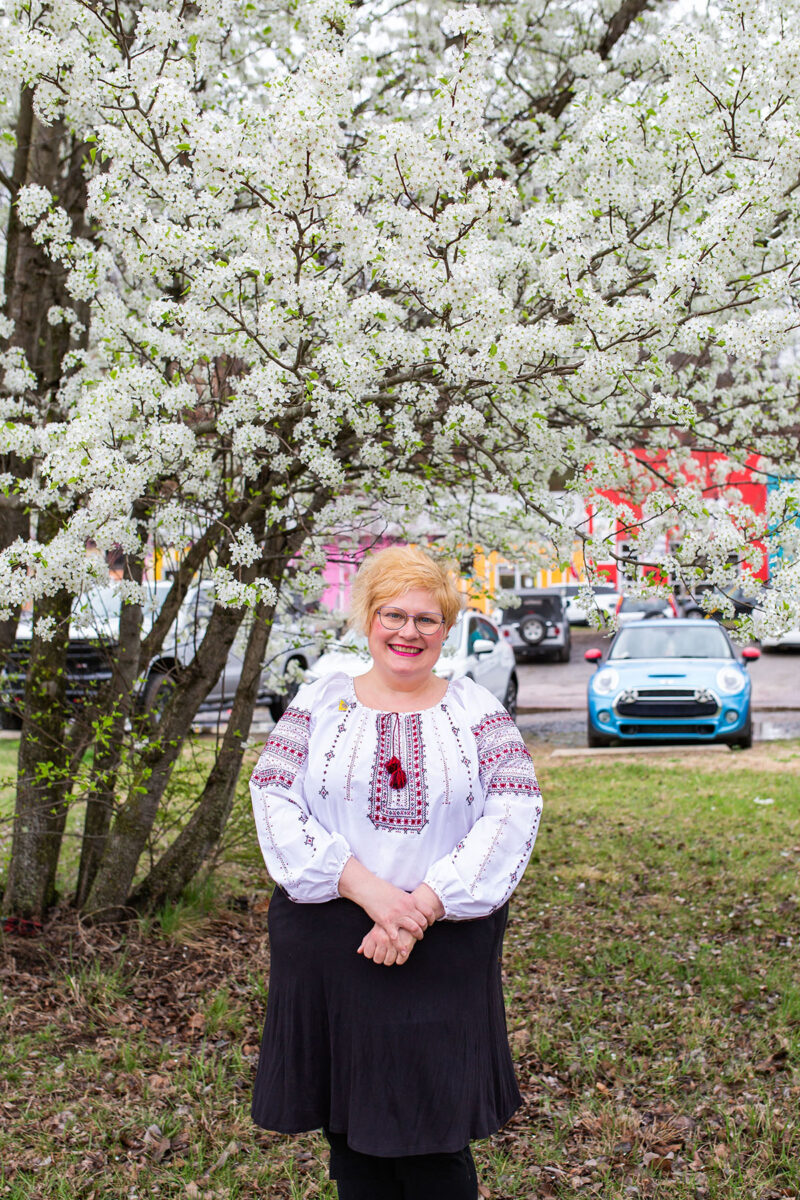
Andrea Kulish of Studio A dyes eggs in the Pysanky style of her native Ukraine.
Photo by Clay Nations Photography
The apparent fragility of Ukrainian Pysanky eggs belies their long history of survival. While their origin story remains obscure, it is known that the practice of decorating eggs with meaningful symbols dates back thousands of years to pagan times.
Over the centuries, this art form has survived several attempts to eradicate its existence, most recently by Russia in its invasion of Ukraine. To thwart these attempts, the Pysanka Museum in Kolomyia, Ukraine — a venue dedicated solely to the folk-art form — has hidden 20,000 of its eggs, according to local Ukrainian artist Andrea Kulish, who has pieces numbered in the venue’s vast collection and learned of the move through her connections to museum officials.
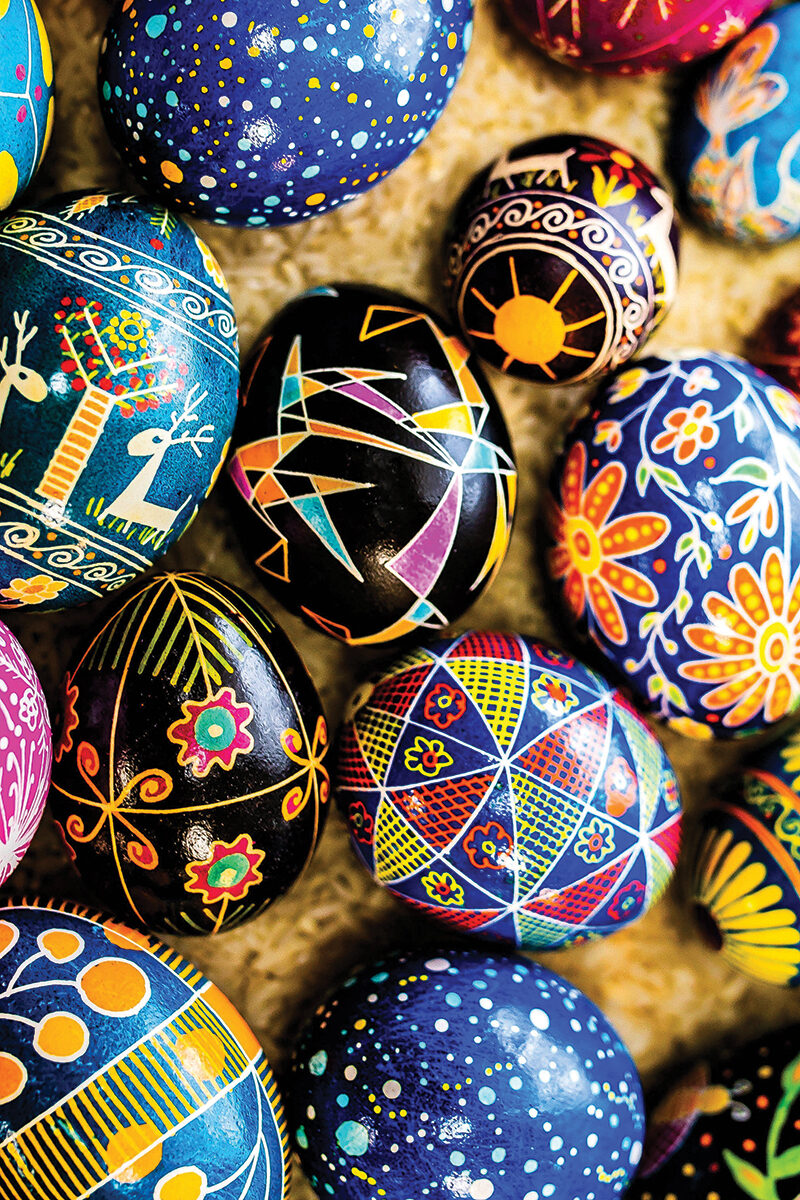
“Pysanky began as ‘springtime eggs,’ as people thought the sun god was angry with them due to the shorter daylight hours in the winter,” says Kulish, who’s also an accomplished graphic designer. “They created Pysanky eggs with pagan symbols, calling back springtime.” She adds, “Later, the symbols were adapted to reflect Christian meanings.”
Kulish’s father’s side is from Poltava in central Ukraine; her mother’s side is from western Ukraine in Ternopil and Ivano-Frankivsk. “My father’s family escaped from the Soviets and hid in Eastern Europe before coming to the United States in 1946, when my father was a young boy. My mother’s family left Ukraine in 1939 and went to Canada before coming to the U.S. when she was also quite young,” relates Kulish.
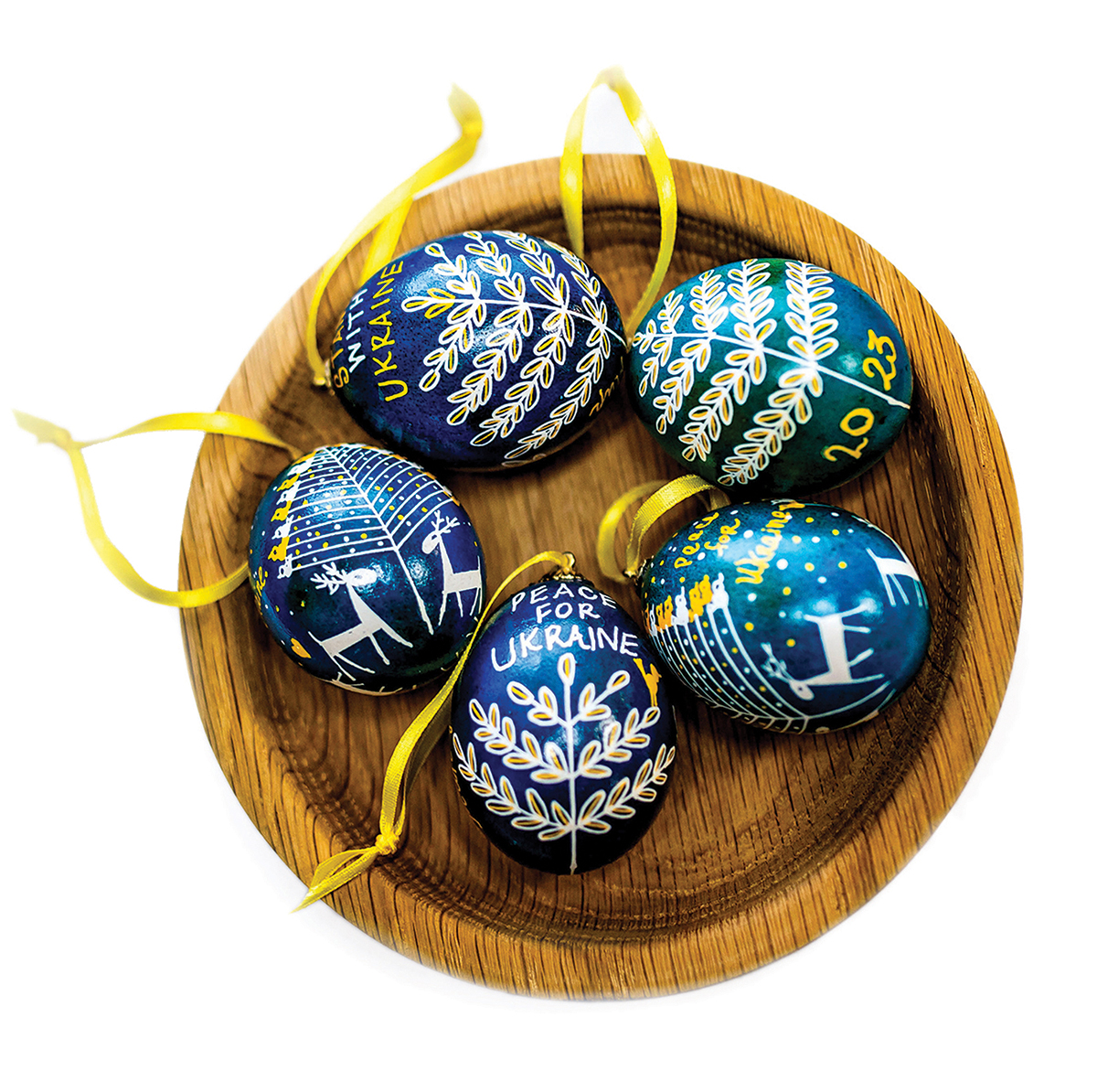
The pieces in the wooden bowl will benefit the Ukrainian National Women’s League of America Humanitarian Aid Fund.
Photo by Clay Nations Photography
To make her eggs, Kulish uses both empty and full specimens. “There is thought to be magic in the insides, however, so traditionally the eggs are left to dry,” she explains. Mostly, though, she uses eggs from which the insides are carefully removed through a small hole drilled in the shell.
“My favorite designs involve flowers, bees, animals, and nontraditional abstract patterns that I create, and I tend towards bright colors.” She finds inspiration everywhere, including nature, dreams, and traditional patterns that she adapts.
Her Pysanky works mostly range from $45-85, but can run as high as $250, depending on the size and intricacy of design.
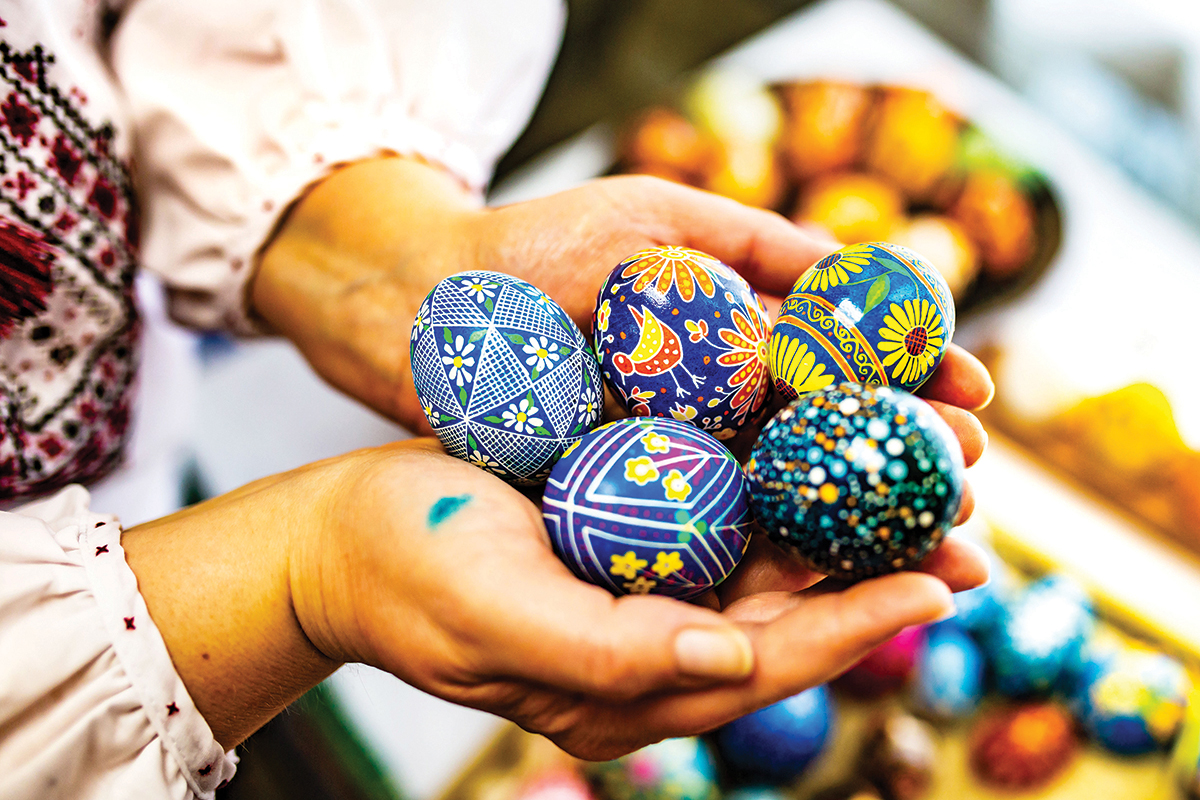
Recently, “I’ve been creating Pysanky to help the people of Ukraine,” she says, “but I couldn’t keep up with the demand.” So she spread the word about her fundraising efforts, and soon Pysanky eggs began arriving from other artists around the country. She gives the artworks as gifts when visitors to her studio donate to the Ukrainian National Women’s League of America’s Humanitarian Aid Fund.
Through this and other efforts, Kulish has so far raised more than $62,000.
Kulish learned Pysanky from her mother, an artist and art teacher. Her parents were always encouraging: “They hung long rolls of paper on the walls for me to draw on when I was little.” Later, her mother began teaching her the intricacies of creating Pysanky; Kulish also sat in on workshops her mother taught.
She explains some of the most commonly incorporated symbolism. “The use of triangles once conveyed the elements of earth, wind, and fire. It has since come to represent the Holy Trinity of Christianity.”
These ornately decorated eggs are closely associated with Easter — Ukrainian Orthodox Easter is April 16 this year — but among the oldest symbols of Pysanky is the sun, simply rendered as a closed circle with or without rays. “Pysanky with sun motifs were said to have been especially powerful because they could protect their owner from sickness and bad luck. In Christian times, the sun symbol has come to represent life, warmth, and the love and existence of God,” says Kulish.
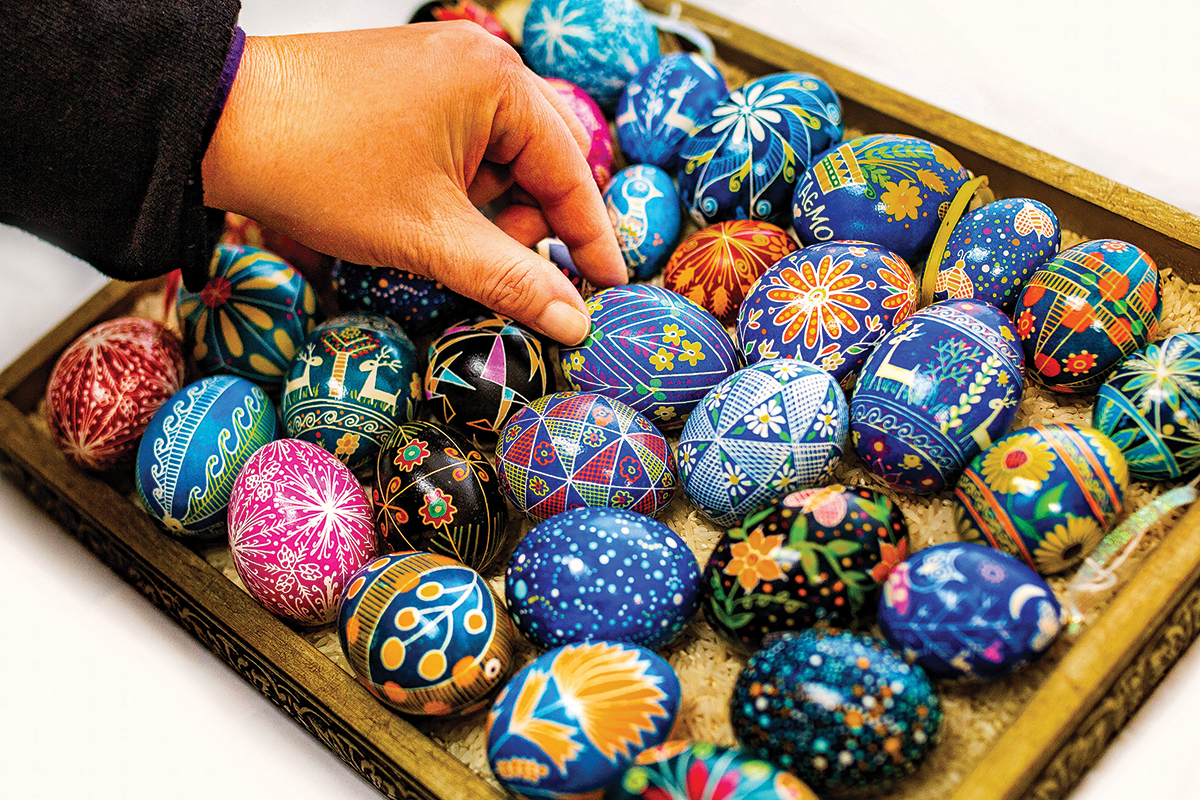
Photo by Clay Nations Photography
Pysanky means written eggs. “This is because they are ‘written’ with beeswax using a stylus,” explains Kulish. The process starts with selecting eggs with smooth, strong shells. “I first wash them in water with some vinegar, which makes the shell more porous to the dyes. Once they’re dry, I draw very light pencil lines as guidelines. I will then take the stylus [known as a kistka] and heat up a metal funnel in a candle flame and scoop in the beeswax, using it to write on the egg everything I’d like to remain white in the final design.” There are fine-, medium-, and large-tipped kistkas for thinner and thicker lines, she explains.
“I then dip the egg in the lightest color dye, such as yellow, for a few minutes and then gently pat it dry. Next, I cover with melted beeswax everything I want to stay yellow, dipping the egg into successively darker colors, adding more wax with each layer, and ending with the darkest color. Then I dry the egg and hold it next to the candle flame to melt the wax and wipe it off.” The final step is to varnish the egg.
Simple patterns can take her less than an hour to complete, whereas more intricate designs can take 15 hours or more.
“A complex ostrich egg,” says Kulish, “can take months.”
Andrea Kulish, Studio A, 344 Depot St., River Arts District, Asheville. The artist teaches Pysanky workshops Wednesdays and Thursdays this spring, 6-9pm, through May 18, and additional workshops at various venues and online throughout the year. For information, see ashevillestudioa.com.
